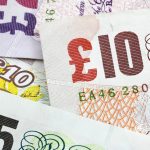Japanese Yen recovers slight intraday losses against the USD, but lacks follow-through.
The Japanese yen (JPY) has recovered after hitting a one-week low versus the US dollar during the Asian session on Friday, and is now trading toward the upper end of its daily range.
The BoJ’s policy uncertainty turns out to be a major factor impeding any considerable advances for the JPY.
The outcome of Japan’s spring negotiations suggested that the majority of corporations have agreed to The demands for salary increases by trade unions should allow the Bank of Japan (BoJ) to escape negative interest rates in the coming months. This, together with a milder risk tone, appears to be a crucial element supporting the safe-haven JPY.
Meanwhile, investors have lowered their expectations for a March rate hike after Bank of Japan Governor Kazuo Ueda issued a slightly bleaker economic forecast earlier this week.
The higher US PPI announced on Thursday strengthens the USD and offers support to Japanese yen.
Aside from that, slight US Dollar (USD) strength, aided by a higher-than-expected US Producer Price Index (PPI), should help limit the Japanese yen pair’s downside. Traders may also avoid placing aggressive directional bets ahead of the highly anticipated BOJ decision and FOMC policy meeting next week.
Daily Market Movers: Japanese yen draws modest haven flows with a weaker risk tone; positive potential appears limited.
The uncertainty around the Bank of Japan’s next policy move continues to undermine the Japanese yen, pushing the USDJPY pair higher for the fourth day in a row, reaching a one-week high during the Asian session.
BoJ Governor Kazuo Ueda provided few hints about when the central bank would remove the negative rate.
BoJ Governor Kazuo Ueda provided few hints about when the central bank would remove the negative rate and stated that policymakers will debate whether the outlook is favorable enough to phase down the enormous monetary stimulus.
Jiji news agency reported on Thursday that the BoJ has begun to make measures to abandon its zero interest rate policy at the March meeting, as big wage gains allow the central bank headroom. to implement the fundamental policy adjustment.
Japan’s Finance Minister Shunichi Suzuki said on Friday that the economy is no longer in deflation and that the government will use all possible policy tools to maintain the robust trend of wage increases this year.
Market players, on the other hand, appear certain that the BoJ will not tighten policy next week and will instead wait until April to determine the extent to which pay increases will be passed on to small and medium-sized enterprises.
Meanwhile, the hotter-than-expected US Producer Price Index issued on Thursday prompted investors to reduce their expectations for an interest rate cut in June, pushing US Treasury bond yields and the US Dollar higher.
The US Bureau of Labor Statistics reported that the PPI for final demand In February, growth increased by 1.6% year on year, compared to the previous month’s upwardly revised print of 1% and the 1.1% projection.
Separately, the US Department of Labor (DOL) stated that there were 209K first unemployment claims in the week ending March 9, down from 210K the previous week and exceeding the market expectation of 218K.
This helps to overcome a minor disappointment in US retail sales, which increased by 0.6% in February. Meanwhile, Sales Ex-Autos increased by 0.3%, while Retail Sales Control Group remained steady throughout the reporting month.
Traders are looking to US data for a boost ahead of crucial central bank meetings next week.
Traders are now looking ahead to Friday’s US economic calendar, which includes the Empire State Manufacturing Index, Industrial Production data, and the Preliminary University of Michigan Consumer Sentiment Index.
The The spotlight remains focused to the BoJ and FOMC monetary policy meetings next week, which could give a fresh impetus and play a crucial role in deciding the near-term trend for the Japanese yen pair.









